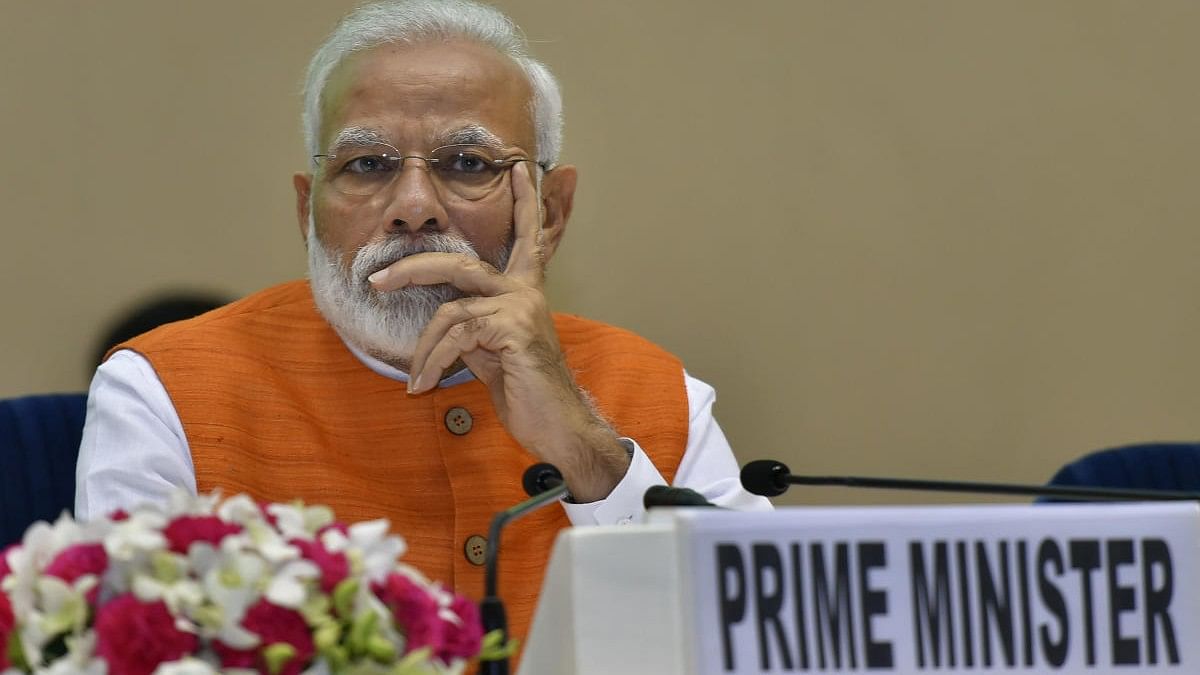
PM Narendra Modi.
Credit: PTI Photo
Employment promotion was the most stand-out feature of Budget 2024-2025.
The Prime Minister’s package of three Employment Linked Incentive (ELI) schemes for generating 21 million jobs, revamping 1,000 Industrial Training Institutes (ITIs) for skills training and internship to 10 million youth in top 500 companies, with expenditures of about Rs 2 trillion, was announced with a lot of chutzpah.
The ELIs and PM’s employment package, unfortunately, found only a casual mention in the first 100-days achievements report.
What explains this? An inherent unimplementability of the package, or is it no longer a political game-changer?
No urgency in roll-out
The first ELI scheme promises one month’s wage, limited to Rs 15,000, to eligible fresh recruits enrolled in the Employees Provident Fund Organisation (EPFO) subject to the employee successfully undergoing a compulsory online financial literacy course.
The second ELI scheme incentivises first-time recruitment in manufacturing jobs. The government promises to pay 24% of the EPFO contribution (reduced to 16% and 8% in the third and fourth years) for the first four years of employment subject to conditions. The employers will need to have a three-year track record of making EPFO contributions, and hire at least 50 persons or 25% of the previous year’s EPFO-registered employees, whichever is lower, maintaining the enhanced employment throughout.
The third scheme targets employment in non-manufacturing sectors with the government paying up to Rs 3,000 per month for two years towards the EPFO contribution for each additional (not necessarily a new) employee. The employers, with less than 50 employees, must increase and sustain employment by at least two employees and those with 50 or more by five employees. For employers creating more than 1,000 additional jobs, the incentive will continue for third and fourth years.
The Ministry of Labour and Employment (MoLE), which has a budget provision of Rs 10,000 crore for the ELIs, seems to be struggling with its formulation. On August 2, the labour secretary asserted that the ministry ‘should be ready with the draft in another few weeks’.
Many weeks have gone by. The government rolled out the unified pension scheme (UPS) for government employees. However, no progress on the ELIs.
ELIs goals are tough and strategy suspect
The total number of employees and workers, in about 2 lakh factories in India, is only 1.72 crore, as per the Annual Survey of Industries 2022, with only about 16 lakh employees (no separate data for the new recruits) added per year. The Employee State Insurance Corporation (ESIC) data suggests still smaller annual increments.
The Narendra Modi government is fond of the policy of making contributions to EPFO to create new employment. The Aatmnirbhar Bharat Rojgar Yojana (ABRY), launched in the wake of Covid-19 in 2020, incentivised re-employment of workers losing jobs (later new employment, as well) by paying 24% of EPFO contribution. This scheme reportedly benefitted 60.49 lakh employees. The second and third ELI schemes mentioned earlier are modelled on the ABRY.
The creation of 30 lakh manufacturing jobs for new recruits and 1.8 crore non-manufacturing jobs looks highly doubtful with the employees receiving no incentive and the risk-reward equation not very favourable for the employers.
No one is excited
The government has literally muffled the Ministry of Skill Development in the last few years.
Earlier it had undertaken schemes to upgrade ITIs as well. Under a PPP scheme initiated in 2008, 1,227 ITIs were approved and upgraded with private participation. Given this, the announcement to upgrade 1,000 ITIs over a five-year period in collaboration with the state governments and industry seems to have excited none. There is no visible follow-up either.
Internship gamble
The internship scheme under the package envisages ‘internship opportunities in 500 top companies to 1 crore youth’ — exposure to real-life business environment. The government will pay an internship allowance of Rs 5,000 per month for 12 months (10% by the company concerned), and one-time assistance of Rs 6,000 per intern.
The eligibility under the scheme is highly restricted. Only those between 21 and 24 years, who are not employed, and who are not engaged in full-time education are eligible. Further, candidates with IIT, IIM, IISER, CA, CMA qualifications or belonging to families assessed to income tax or of government employees are not eligible.
Who remains eligible? Also, can the top 500 companies hire 2 million interns a year?
The Ministry of Corporate Affairs, entrusted to implement the scheme (budget allocation Rs 2,000 crore) is reportedly making the list of top 500 companies. Thereafter, it will invite companies (the scheme is voluntary) to indicate their interest in taking in interns, and those eligible need to apply. Finally, companies will have to hire from the shortlisted candidates.
One must wait and see how and when each of these steps is completed.
PM package on backburner
Completion of the first 100 days coincided with Modi’s 74th birthday. The Government of India used the occasion to rollout most of the promises made in the Union Budget and outside. Surprisingly, it did nothing to roll out the PM package for employment.
Has the programme been sent to the backburner?
(Subhash Chandra Garg is former Finance & Economic Affairs Secretary, and author of ‘The Ten Trillion Dream’ and ‘We Also Make Policy’.)
(Disclaimer: The views expressed above are the author's own. They do not necessarily reflect the views of DH.)